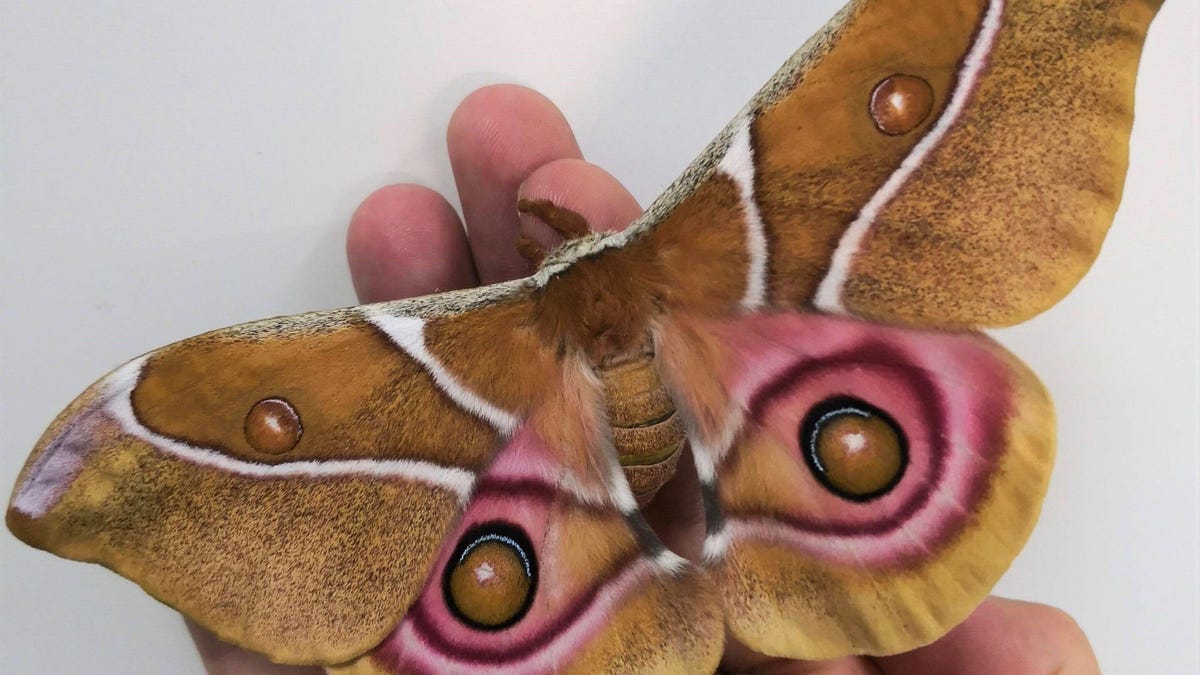Deaf moths hide from hungry bats through acoustic camouflage
Some moth species cannot hear but can still protect themselves by absorbing up to 85% of the incoming sound from predatory bats, a study finds.

Antherina suraka is one of the four species used in a study on acoustic camouflage.
Bats use biosonar to hunt their prey by producing sound waves and then scrutinizing the returning echoes that bounce off insects. Moths are often able to fly away from hungry bats just by listening for the sounds they make. But moths species that cannot hear must rely on a much more interesting way to survive.
Researchers at the University of Bristol in the UK took a look at four deaf moth species under an electron microscope and found that the scales on their bodies look a lot like the fibers from hemp and the kenaf plant, which are often used in man-made sound insulation materials.
In a study published Wednesday in Royal Society Interface, researchers revealed that the deaf moths they studied can absorb as much as 85% of the incoming sound energy from predatory bats.
3D visualizations of the right forewing, intact thorax and bald thorax detection range for species Antherina suraka, Callosamia promethea, Graphium agamemnon and Papilio troilus.
For the study, researchers explored the thoracic scale morphology of two earless moth species (Antherina suraka, Callosamia promethea) and two butterfly species (Graphium agamemnon, Papilio troilus), to determine the scales' effect on the detectability of echoes returning to a bat.
"We were amazed to see that these extraordinary insects were able to achieve the same levels of sound absorption as commercially available technical sound absorbers, whilst at the same time being much thinner and lighter," Thomas Neil, the paper's lead author and a research associate at the University of Bristol's School of Biological Sciences, said in a statement Wednesday.
The data could help create better human-made sound insulation systems.
"We are now looking at ways in which we can use these biological systems to inspire new solutions to sound insulating technology and analyze the scaling on a moth's wing to explore whether they too have sound absorbing properties," Neil said.

